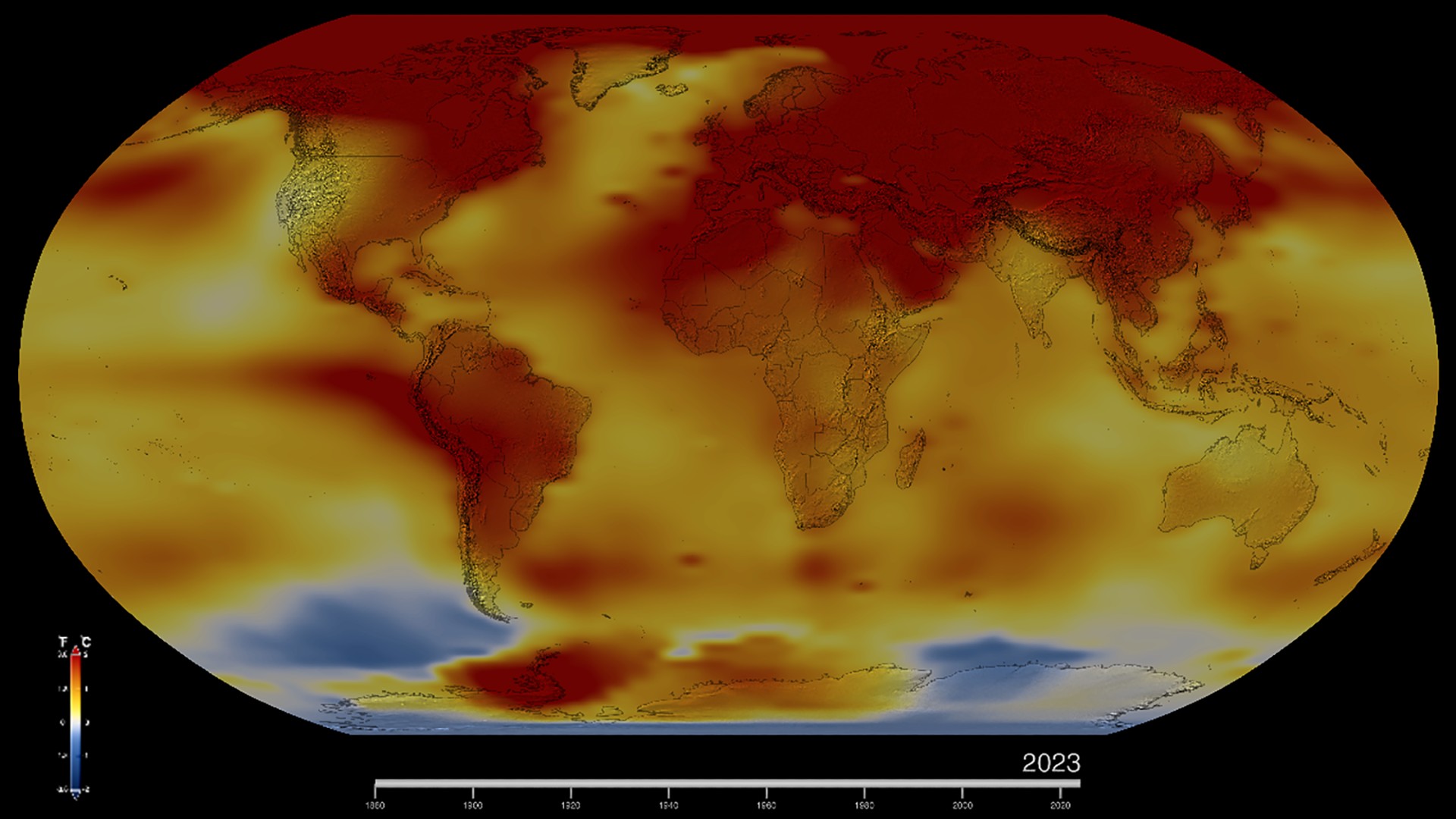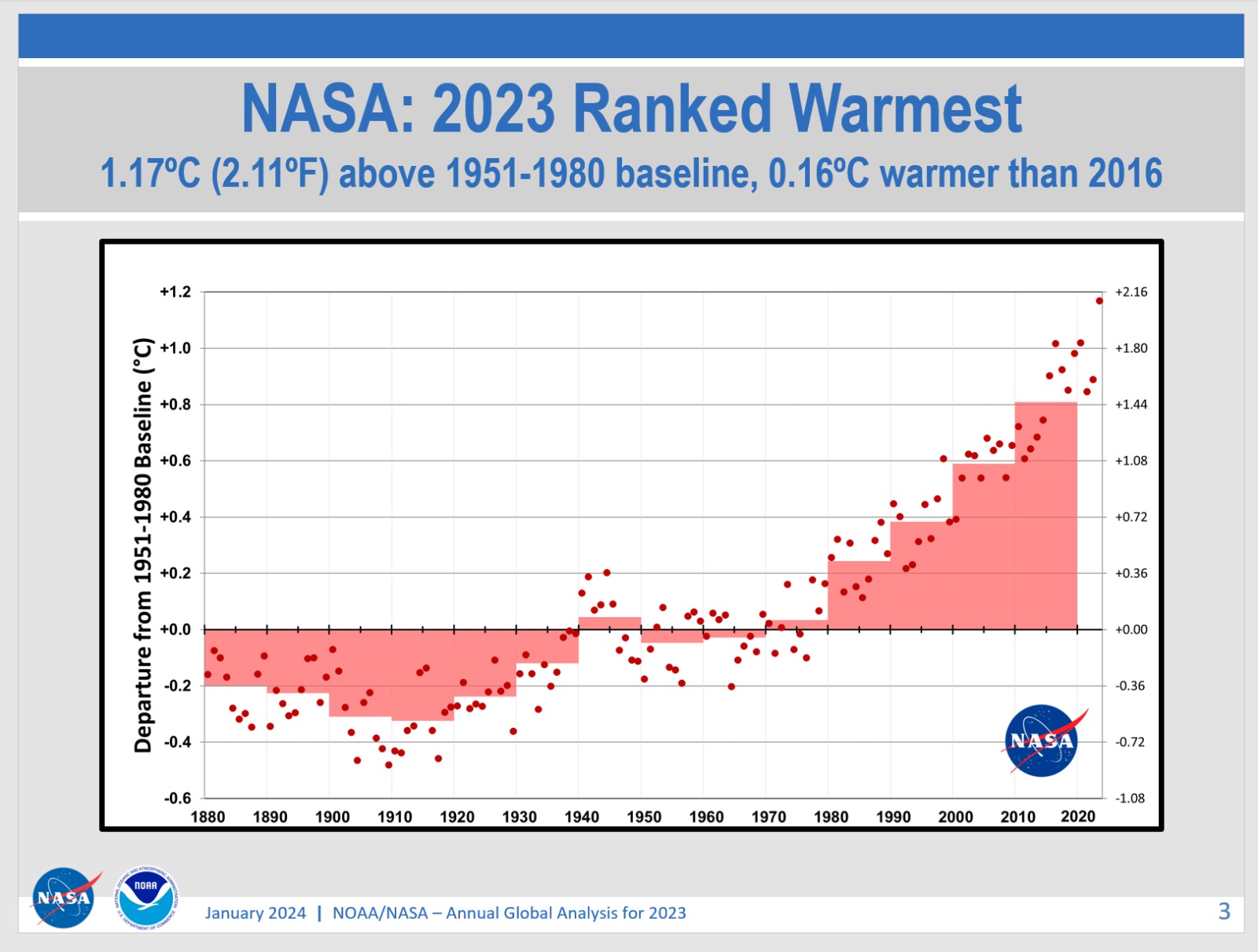
It's official: 2023 was the hottest year on record.
On Friday (Jan. 12), climate scientists from NASA and NOAA unveiled data showing that temperatures continue to rise at shocking rates, contributing to severe climate-driven weather events worldwide. NOAA's and NASA's analyses did not use satellite data or weather forecasts. Instead, their analysis used surface data that included sea surface temperatures measured by ships and buoys and air temperatures collected by terrestrial weather stations to track climate change.
What those analyses found has scientists shocked. "The findings are astounding," said Sarah Kapnick, chief scientist at NOAA. "2023 was an extraordinarily warm year that produced many costly climate driven weather events here in the United States and worldwide."
Gavin Schmidt, director, NASA's Goddard Institute for Space Studies, added that the different in average temperatures by which 2023 beat previous record years of 2016 and 2020 is well above estimates of measurement uncertainty, making scientists confident in declaring 2023 as the hottest year on record. "None of those uncertainties are large enough to change the bottom line of what we're talking about," Schmidt added." And that that's the long term trend and the record walks that we're seeing in 2023.
"And so, we're looking at this and we're frankly, astonished."
Related: 10 devastating signs of climate change we see from space

Schmidt added that the record temperatures are in line with the agency's predictions for how changes in greenhouse gases and other forces would impact global temperatures.
Russ Vose, chief of the analysis and synthesis branch at NOAA's National Centers for Environmental Information, elaborated on the changes in measured levels of greenhouse gases, which can trap heat within Earth's atmosphere. "Carbon dioxide concentrations are about 50% higher than pre-industrial levels. Methane is up about 150%, nitrous oxide about 25%. Present day concentrations of carbon dioxide are at elevated levels, basically higher than at least last 2 million years. There was one recent study that said it may be harder than the last 14 million. So it's been a long time since they've been this high," Vose said.

Despite these record-high temperatures worldwide, some areas of Earth experienced below average temperatures in 2023, including Eastern Asia and North America. However, scientists say this variation is "somewhat typical" and despite the variation, "2023 won by a longshot" in terms of highest average temperature, said Vose.
Vose continued to add that based on current models, 2023 might not hold the record for long. "The NOAA calculations suggest there's a one in three chance 2024 will be 2023 and 99% chance that we'll rank in the top five. But now for the sake of full disclosure, because those who do predictions often don't talk about the records, last year at this time, we were saying there was only a 7% chance that 2023 would be the warmest year on record. So the point is you have to take these things with a grain of salt."

NOAA's Kapnick added that the extreme weather events in 2023 had an extreme impact on the American economy. "The U.S. alone had a record breaking 28 separate billion-dollar weather and climate disasters this past year, causing over 90 billion in damages. The 28 events easily surpassed the previous record of 22 events set in 2020," Kapnick said. The scientist added that since 1980, the United States has experienced 376 weather and climate billion-dollar disasters that together cost the nation over $2.6 trillion.

Data collected by NOAA and NASA show that the Arctic is warming about 3.5 times faster than the global average and that while Antarctic sea ice trends are are also changing rapidly, these changes aren't yet easily explained.
Similarly, there are trends and forces that may be affecting these temperature measurements worldwide that aren't yet well understood, scientists added during the conference.
But undeniably, global temperatures reached their highest average levels in 2023.
A separate study published by the U.K.'s Met Office and the University of East Anglia reached the same conclusion, as did another published by a multi-national team of scientists using data from the Institute of Atmospheric Physics (IAP) at the Chinese Academy of Sciences (CAS).
NASA's full dataset of global surface temperatures through 2023, including descriptions of how NASA scientists conducted the analysis, are publicly available online.







